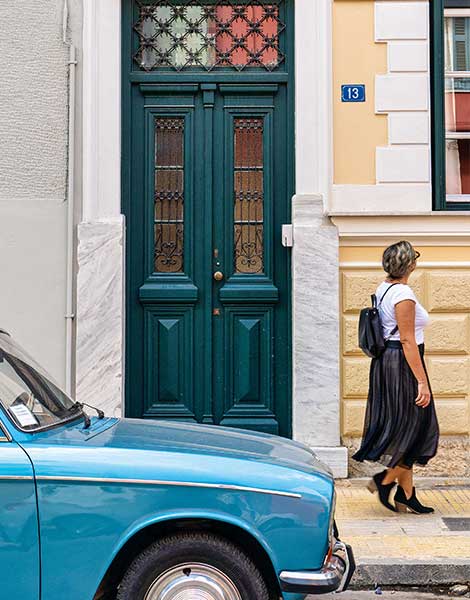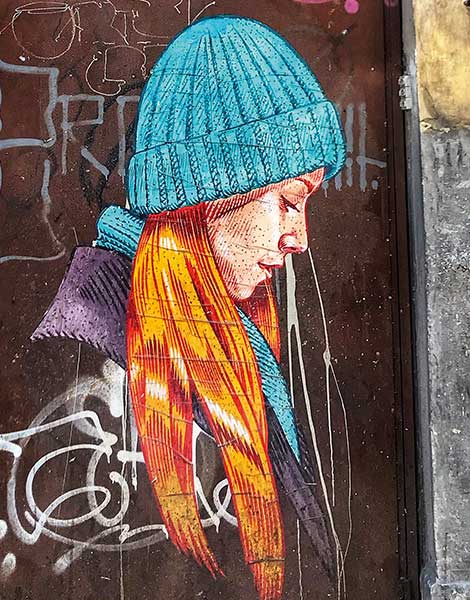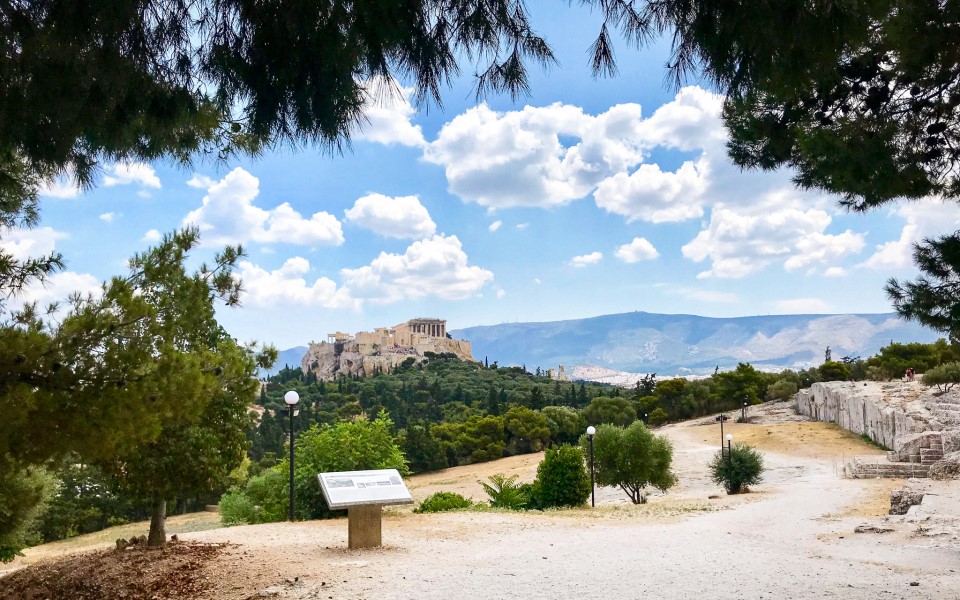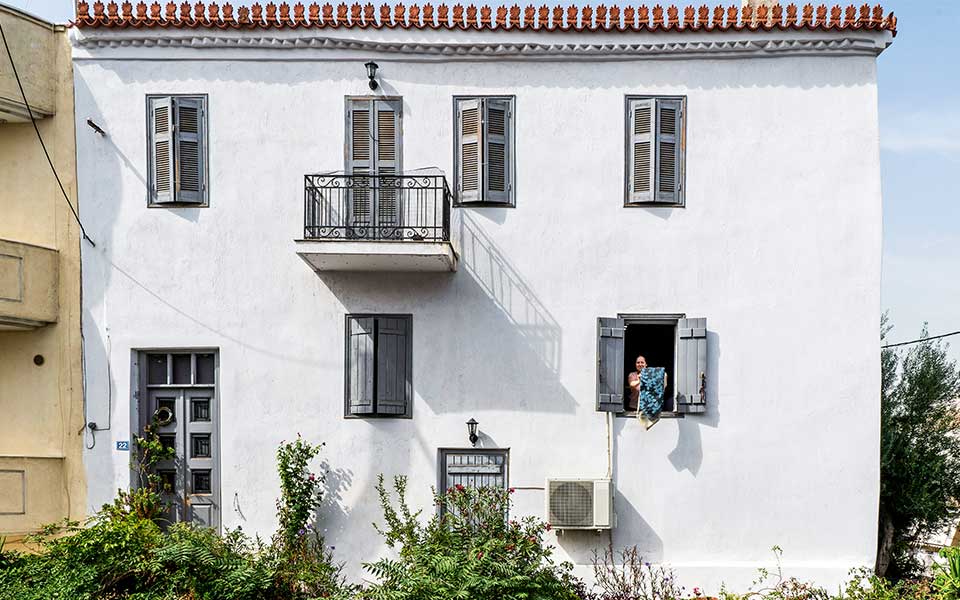If there’s one neighborhood that’s as old as Athens itself, it’s Thiseio.
Here, walkers are rewarded with the sweet sensation of strolling in the shadow of the Acropolis beneath the Hill of the Muses crowned by the National Observatory of Athens, with the hills of the Pnyx and Filopappou outlined in the distance.
The name Thiseio derives from the Temple of Hephaestus in the Ancient Agora, a temple that was once believed to be the burial site of Theseus. The temple became, for a time, the Church of Saint George Akamates, remnants of which are still visible. Later, it also sheltered the first improvised Archaeological Museum, as a kind of glorified storehouse. It is a true palimpsest of histories.
But if we’re to speak of a genuine urban experience, it must be sought in Thiseio’s narrow lanes and alleyways, behind pedestrianized Apostolou Pavlou Street. At times, ambling through the streets of Thiseio, you feel the true atmosphere of Athens on a small scale, the Athens of Athenians, of everyday people, reflected in 19th-century dwellings, houses from the interwar period, and apartment buildings erected in the 1970s.
Taken together, they create that indefinite thing we call Athens, a distinct, hybrid coexistence of the past with the present.

© Perikles Merakos

© Perikles Merakos
An initial walk to get to know the neighborhood might start from Ilia Poulopoulou Street, where you feel as if you’re passing through the gates of Thiseio, with two-story neoclassical houses that remind us that this neighborhood has been inhabited for quite some time.
Few remember that Thiseio used to adjoin another neighborhood, Vrysaki (whose name was derived from the mythic hero Eurysaces) that has long been consigned to history: Vrysaki in its entirety was expropriated and demolished in the 1930s to make way for the excavations of the Ancient Agora undertaken by the American School of Classical Studies.
Today, with Vrysaki gone, Thiseio emerges as a distinct neighborhood, at least when seen from the metro station, with Apostolou Pavlou Street and the Agora forming its border. I love coming across the old houses on its tiny streets, both the large aristocratic homes and the simple working-class dwellings built around inner courtyards – believe it or not, there are still quite a few of these around.
Quiet streets lined with bitter orange trees remind us that this was once the aristocratic side of the ancient Athenian neighborhood. Vasilis Street (named after Vasili, an Athens deity) is dotted with beautiful old homes, most in ruins but still admirable in their authenticity. Stop at 17 Vasilis Street, one in a row of four neoclassical houses, to take note of the folk meander patterns above the doorway.
In Thiseio, I always feel that if I could enter these abandoned aristocratic homes from the 1900s, I’d find ceilings adorned with cracked paintings of Dionysus, Hermes, grapevines and laurel sprigs entwined with snakes.
One such home stands at the corner of Ilia Poulopoulou and Amfiktionos, looking as if it came straight out of a Visconti film – and if you want to see yet another, bathed in the same terracotta color, walk up another block to Akteou Street; the house stands in crumbling silence on the corner of Akteou and Lykomidon. An enormous fig tree in the courtyard reminds us that we’re still most definitely in Athens.

© Nikos Vatopoulos
From here, a spot so typical of Thiseio, we’ll leave behind the central arteries of Iraklidon (with the atmospheric bookshop Lemoni) and Nileos, and ascend to the left, feeling the breeze on the small rises that are extensions of the Hill of the Muses, whose undulations reach the border between Thiseio and Ano Petralona.
It is a border at the edge of an illusion. On a clear day, you’ll be absorbed in the light that seems stronger here, and find your balance again on the downward slopes leading towards Ano Petralona.
Modest homes and small apartment buildings, some well-maintained and tidy and others abandoned or in ruins, comprise a unique scene. Straight ahead, at 61 Akamantos Street, pause among the other beautiful homes to note this abandoned traditional dwelling, with its elements of vernacular architecture.
Dimofontos Street, which leads us into the neighborhoods of Ano and Kato Petralona, also offers an enjoyable stroll. To the right, you’ll see the beautiful doors of a line of old houses, and to the left the hills and the old school; the refugees from Asia Minor who lived here until the 1960s are today but a fading memory.
There are small cafés on Dimofontos, but if you want a livelier scene and a view of other neoclassical relics, you can walk down a bit further to Trion Ierarchon. Here, at No. 24, on the corner of Aixoneon Street, awaits the figure of a girl, one of the best examples of street art in Athens.












